Sunday, 31st March, 2024
EASTER SUNDAY
—————————–‐‐———
Lord Jesus, early in the morning of your resurrection, you made your love known and brought the first light of dawn to those who dwell in darkness. Your death has opened a path for us. Do not enter into judgment with your servants; let your Holy Spirit guide us together into the land of justice.
Protect us, Lord, as we stay awake; watch over us as we sleep, that awake, we may keep watch with Christ, and asleep, rest in his peace.
May almighty God have mercy on us, forgive us our sins and bring us to everlasting life. Amen.
——————————————
Alleluia
Alleluia, alleluia.
Christ, our paschal lamb, has been sacrificed; let us then feast with joy in the Lord. Alleluia, alleluia.
The Gospel
Jn 20:1-9
On the first day of the week, Mary of Magdala came to the tomb early in the morning, while it was still dark and saw the stone removed from the tomb. So she ran and went to Simon Peter
and to the other disciple whom Jesus loved, and told them “They have taken the Lord from the tomb and we don’t know where they put him.” So Peter and the other disciple went out and came to the tomb. They both ran, but the other disciple ran faster than Peter and arrived at the tomb first; he bent down and saw the burial cloths there, but did not go in.
When Simon Peter arrived after him, he went into the tomb and saw the burial cloths there,
and the cloth that had covered his head, not with the burial cloths but rolled up in a separate place. Then the other disciple also went in,
the one who had arrived at the tomb first, and he saw and believed. For they did not yet understand the Scripture
that he had to rise from the dead.
——————————————
GOSPEL REFLECTION
Initially the disciples didn’t seem to know whether the surprising discovering of the empty tomb was good news or bad news.
Mary Magdalene said, ‘They have taken the Lord out of the tomb’. She thought the body had been stolen. The initial running wasn’t the energy of joy but the energy of anxiety and confusion.
Of the three people mentioned in the gospel reading this morning, the evangelist declares that only one of them recognised immediately why the tomb was empty.
It was the beloved disciple who ‘saw and believed’. He recognised that the reason the tomb was empty was not because the body had been stolen but because Jesus had risen from the dead.
It was this faith which brings us together on this Easter Sunday.
Jesus is more alive today than he was before he was put to death.
In being raised from the dead, Jesus did not return to the life he lived before his death; he passed over into a fuller and more wonderful life.
The Jesus who walked the paths of Galilee and the streets of Jerusalem continues to journey with all of us as risen Lord today.
This was the wonderful discovery that the two disciples made as they journeyed from Jerusalem to Emmaus.
He continued to be present to them in a special way in the Scriptures and in the Eucharist.
Their hearts burned within them as he opened the Scriptures to them, and then went on to recognise him fully in the breaking of bread.
The Scriptures and the Eucharist remain two privileged ways that the risen Lord is present to us today.
He continues to speak to us through his Word, so that our faith may be fanned into a living flame.
He continues to give himself to us in the Eucharist under the form of bread and wine.
Apart from those privileged places where the Lord draws near to us in his Word and the Eucharist; the risen Lord is present to us in many other ways as well.
He comes to us in and through our children.
During His public ministry, Jesus said that whoever welcomes a little child welcomes Him.
The Lord also comes to us in and through those he termed the least of his brothers and sisters, those who are most vulnerable and who seem to have least to offer.
Today’s wonderful feast assures us that the Lord is all around us even in those dark and difficult experiences that threaten to swamp and engulf us.
He is all around us as we face into that most difficult experience of our own death.
We can be certain that our current understanding of what it means to share in the Resurrection of Christ is but the faintest shadow of the reality.
In truth, very few people in this life have come close to understanding the glory to which we are called on account of the Resurrection.
Saints Francis of Assisi, Catherine of Sienna, John of the Cross, Thérèse of Lisieux, to name a few, are among those who penetrated the mystery of Easter while still here on earth.
They achieved this spiritual knowledge only by fully dying with Christ through a life of profound prayer, penance, and charity that completely united their souls to the Most Holy Trinity.
As we celebrate Easter, it is important to know that we do not yet know all that is promised to us by the Resurrection of Christ.
Too often, Christians go through life satisfied with the most basic understanding of the Gospel.
We know that God became man, lived His life, gathered followers, taught and performed miracles, died on the Cross, rose again, ascended into Heaven, and sent the Holy Spirit. Furthermore, we have hope in His promise that if we remain in His grace, then we will share in Heaven after we die.
But this is an exceptionally incomplete view of the full reality that has been comprehended in this life by the saints. It is their understanding we must seek with every power of our souls.
—————————————–
*PRAYER BASED ON TODAY’S GOSPEL*
My Resurrected Lord, the glory to which You have called me is beyond my natural capacity to comprehend. I could never imagine what awaits those who fully, and without reserve, surrender their lives to You and obey every aspect of the Father’s will. Please fill me with a realization that there is so much more that I do not know. Inflame my soul with a desire to quench that longing to know You more so as to share more fully in the glories of the Resurrection while here on earth and forever in Heaven.
Jesus, I trust in You
——————————————
*INTERCESSIONS*
For our sake our Redeemer suffered death and was buried, and rose again. With heartfelt love, let us adore him, and pray:
_Lord, have mercy on us._
Lord Jesus, when your side was pierced, there flowed out blood and water, the marvelous symbol of the whole Church – through your death, burial and resurrection, bring life to your bride, the Church.
_Lord, have mercy on us._
Lord Jesus, you remembered those who did not remember your promise of resurrection,
— remember those without hope, who do not know that you have risen.
_Lord, have mercy on us._
Lamb of God, you were offered for all as our paschal sacrifice — draw all mankind to yourself.
_Lord, have mercy on us._
God of all the world, you encompass the universe but were pleased to be laid in a tomb — free the human race from the powers of darkness, and grant it the gift of immortal glory.
_Lord, have mercy on us._
Christ, Son of the living God, you opened the gates of paradise to the repentant thief — gather all who have shared your death and burial into the glory of your resurrection.
_Lord, have mercy on us._
Finally Lord, we call upon you to take care of all those suffering with illness tonight. We pray for their families who suffer with them, at this time of darkness in their lives. We prayer that they will experience the light of your presence within their lives, helping through these difficult days.
_Lord, have mercy on us._
——————————————
_Be patient in suffering, be constant in prayer_ (Romans 12:12).
——————————————
*THE LORD’S PRAYER*
Our Father, who art in heaven, hallowed be thy name; thy kingdom come,
thy will be done on earth as it is in heaven. Give us this day our daily bread;
and forgive us our trespasses as we forgive those who trespass against us and lead us not into temptation, but deliver us from evil. Amen
——————————————
*CONCLUDING PRAYER*
Let us pray.
Lord, be with us throughout this night.
When day comes may we rise from sleep to rejoice in the resurrection of your Christ, who lives and reigns for ever and ever.
— Amen.
May the all-powerful Lord
grant us a restful night
and a peaceful death.
— Amen.
——————-
Father, I thank you, for you have heard my prayer. (John 11:41).
——————————————
Happy Easter to one and all….


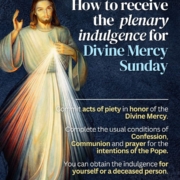
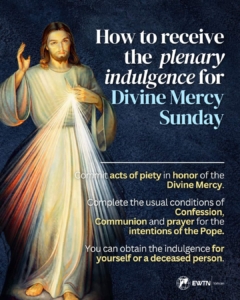

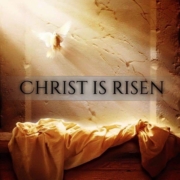
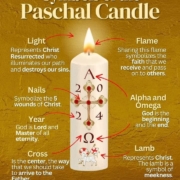
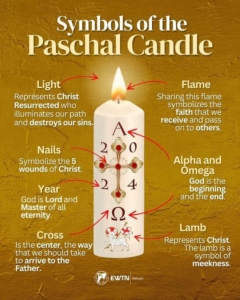





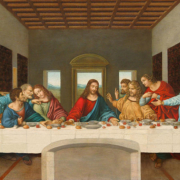
 William G. Henry & Co., Solicitors
William G. Henry & Co., Solicitors Stewart Fuel Oils, Boyle
Stewart Fuel Oils, Boyle






